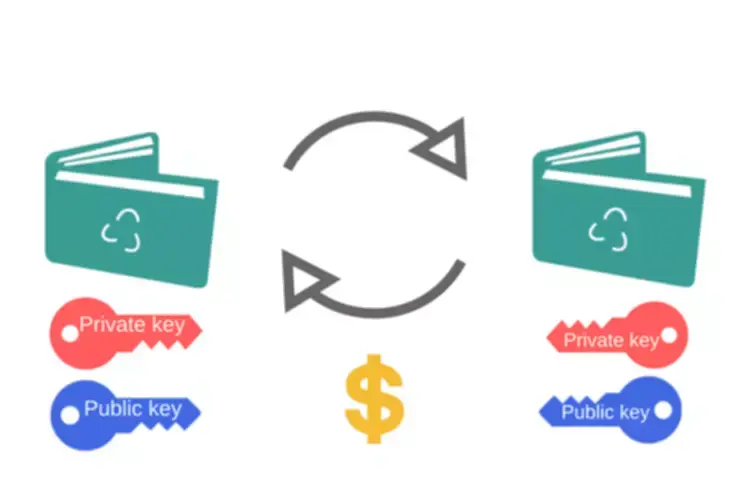The community is dealing with about 29 transactions per second as of May 2023, however builders are nonetheless promising that it ought to be ready to handle one hundred,000 transactions per second sooner or later. This Ethereum improve was advanced, but the community needed it for a quantity of causes. The Ethereum community was bogged down by technical limitations—namely network congestion, scalability, and accessibility. Any views, opinions, references, assertions of fact and/or different statements aren’t essentially the views held by the Cake Group.
To become a validator and to win the block rewards, you lock up—or stake—your tokens in a smart contract, a bit of laptop code that runs on the blockchain. When you send cryptocurrency to the smart contract’s pockets address, the contract holds that currency, kind of like depositing money in a vault. Proof-of-stake blockchains inherit security by delegating the function of verifying and confirming transactions to its largest stakeholders.
Proof Of Stake Vs Proof Of Labor
Each transaction on a blockchain is recorded as a ‘block’ of data and must be verified by peer-to-peer laptop networks earlier than being added to the chain. This system helps safe the blockchain against fraudulent activity and double-spending. The value of the network’s forex is now not tied to a real-world asset – power – as in the case of proof-of-work. Instead, the currency’s worth primarily is decided by economic exercise on the blockchain network.
Of course, Ethereum’s move to proof of stake has been six months away for years now. “[We thought] it would take one 12 months to [implement] POS … nevertheless it really [has] taken round six years,” Ethereum’s founder, Vitalik Buterin, told Fortune in May 2021. Not only does proof of work waste electricity https://www.xcritical.com/, it generates electronic waste as nicely. Specialized laptop servers used for crypto mining usually turn out to be out of date in 1.5 years, and so they find yourself in landfills. The comments, opinions, and analyses expressed on Investopedia are for informational functions online.
She is a financial therapist and transformational coach, with a special interest in serving to women learn to make investments. A summary of key phrases and definitions regarding Ethereum 2.zero and staking on the beacon chain in 2020 and past. The most transparent method to get cashflow from your cryptocurrencies.
- The move has been many years in the making however doesn’t come with out dangers.
- Validators who actively participate in securing the community can earn rewards, but the exact returns depend upon elements like the whole amount staked, network activity, and the validator’s uptime.
- Pioneered by Satoshi Nakamoto with the discharge of Bitcoin in 2008, PoW has thus far powered nearly all of highest-profile blockchains, including Ethereum.
- Meanwhile, any dangerous actor wishing to achieve management over the community would wish to own greater than 51% of the coins staked at the moment.
- Both approaches entitle stakers to obtain a portion of rewards earned by the validator.
- Ethereum 2.zero is a Proof of Stake chain that will go live in phases, beginning with Phase zero in 2020.
Instead, the community protocols randomly choose which nodes get to validate transactions and open new blocks. Migrating a cryptocurrency from proof of work to proof of stake is an advanced and extremely deliberate course of. Any crypto that desires to vary consensus mechanisms should go through an arduous planning process to make sure the blockchain’s integrity from start to finish and beyond. Proof of work has earned a nasty reputation for the large quantities of computational power—and electricity—it consumes.
Proof Of Work: Security Through Energy Consumption
The fees improved after the improve occurred, as validators started staking their ether. The alternative between PoW and PoS ultimately depends on the precise targets and priorities of a blockchain community. PoS is a better fit for Ethereum’s long-term roadmap of sustainability and scalability.

PoS requires validators to stake their ETH to create new blocks and validate transactions as an alternative. Proof of labor pits miners against one another, as they compete to solve a troublesome math problem. Any miner who solves the problem first, updates the ledger by appending a new block to the chain, and will get newly minted coins in return. This requires an unlimited amount of computing power and, thus, electricity. While proof of stake is still emerging as a consensus mechanism for blockchain, it holds significant potential.
Pos Paves A Brighter Future For Ethereum
The mixed computational power required for an individual to compromise a well-established PoW blockchain like Bitcoin or Ethereum would value an extraordinary amount of money, and will not even exist. At the time of writing, staked ETH and staking rewards are yet to be unlocked. Moreover, we are but to see the implementation of some major new scalability choices, corresponding to sharding.
Validators are then randomly selected by an algorithm to propose or attest new blocks based mostly on their stake measurement and different factors. While this consensus mannequin makes blockchain data secure, additionally it is very energy-intensive. In Phase zero of Ethereum 2.zero, rewards for proposing and testifying won’t be distributed to validators till the minimum threshold of staked ETH and dedicated validators is reached to launch the network. The network would require at least 524,288 ETH to be staked, divided among a minimum of sixteen,384 validator nodes.
Blockchain And Ai: The Model New Energy Couple
But to have the supposed scalability throughout all industries and makes use of, the blockchain needed to have the ability to handle network interactions on a much larger scale. With PoS, profits primarily come from transaction fees and block rewards. Validators who actively take part in securing the network can earn rewards, however the actual returns depend upon components like the whole is ethereum proof of stake quantity staked, network exercise, and the validator’s uptime. Proof-of-stake is a mechanism used to verify blockchain transactions. It differs from proof-of-work considerably, mainly in the reality that it incentivizes sincere conduct by rewarding those that put their crypto up as collateral for an opportunity to earn extra. So, a blockchain is a digital ledger of distributed, decentralized, and sometimes public transactions.

PoS chains remove the infinite race that sometimes forces miners to compute the same transaction whereas just one wins. This leads to significantly much less power usage, as validator selection is based on the worth of staked assets. Staking suppliers provide services––such as staking-as-a-service and/or staking pools––that stake funds and create, propose, or vote on blocks added to the blockchain on behalf of token holders. Staking providers help offload the technical burden of maintaining an online validator and/or scale back monetary obstacles to participation for members. Where PoW requires miners to put in the work to increase the blockchain, proof-of-stake (PoS) adopts an entirely totally different tack.
Are these critiques trustworthy, or are they primarily motivated by profit-driven incentives? This article will dig into these concerns and evaluate the benefits the PoS system presents well-liked blockchains. And as many acquainted with consensus mechanism wars know, there are more issues and trade-offs that critics argue restrict its capacity to supply safety and censorship resistance at scale.
Bribery Assault
As of the date this article was written, the writer doesn’t personal bitcoin or ether. Learn more about proof-of-stake and how it is different from proof-of-work. Additionally, find out the issues proof-of-stake attempts to deal with within the cryptocurrency industry.
They do so by staking crypto (in the case of Ethereum 2.zero, ETH) on the community and make themselves out there to be randomly chosen to propose a block. When a adequate variety of attestations for the block has been collected, the block is added to the blockchain. Validators obtain rewards each for successfully proposing blocks (just as they do in PoW) and for making attestations about blocks that they’ve seen.

The Cake Group disclaims any legal responsibility whatsoever that may come up out of or in reference to such statements. Always do your individual analysis earlier than investing in any monetary belongings and consult a qualified financial advisor if essential. Apart from making Ethereum extra energy-efficient and environmentally friendly, PoS additionally permits the network to drive profits for its users. Details in regards to the 51% attack and the potential for its prevalence could be discovered at the link [WHAT A 51% ATTACK ON BLOCKCHAIN – LEVEL MASTER]. The software program replace to switch the consensus to Proof-of-Stake (PoS) occurred in August 2022.

Moreover, particular implementations, similar to delegated proof-of-stake (DPoS), select validators for brand spanking new blocks based on the variety of cash group members stake to the validator’s node. Proof-of-stake is a sort of blockchain consensus mechanism that evaluates the crypto stake of taking part nodes when deciding on one for block validation. Improvements in these areas were and remain critical if Ethereum is to reach a wider level of adoption. Ethereum is the blockchain many smart-contract-based decentralized purposes (dApps) are housed on, and these have purposes in finance, real property, supply chains, and governance, among many others.
